
Thomas Kretschmann plays the sort of serial rapist you're likely to take home -- certainly not to meet your mother, but someone you'd happily allow to escort you down a dark alley. But behind that winning smile and polite demeanor waits a savage serial killer, who chews razor blades like it's spearmint gum, and whose rape den resides near a serene waterfall for the additional comforts of noise control and underground graffiti art designed by junkies.


Anna Manni's problem lies largely with the artwork. A tough chick who knows her way around a pistol, Police Inspector Manni (Asia Argento) becomes easily disoriented in the wake of great works of art (and some would argue Thomas Kretschmann fits that bill as well). Anna herself then would have trouble watching the first 30 minutes or so of The Stendhal Syndrome (La sindrome di Stendhal), which stream like a surrealist nightmare to match some of Dario Argento's greatest directorial work. It's a disorienting descent into terror from all sorts of abstract sources. One being the notorious serial rapist, the other being framed works of genius that menace and consume Anna's very being. At one point Anna, entranced by the calming cerulean waters hung before her at the Uffizi Art Gallery, falls into the painting and to the ocean floor, where her encounter with a passing fish becomes oddly friendly and oddly lustful. Argento's film likewise plunges immediately into Anna's progressively deranged mental state. She's made a victim before we realize her true strength, and we're asked to repeatedly question such a label as Anna moves further and further off the deep end.

Upon surfacing from the painting, Anna now has a good idea of her condition but no idea of who she is. She suffers from The Stendhal Syndrome -- a rare condition that has Anna overpowered and bewildered in the face of great art. How unfortunate that Anna's police sting to catch a serial rapist had to happen at, of all places, the famous Uffizi Gallery. And how unfortunate that the serial rapist, Alfredo, already had his disarmingly sweet eyes upon her. She's taken into the helpful hands of her rapist, who politely collects her purse and helps her into a cab, only to use that information to track her address. As the blood starts to flow and the sexual violence commences, Anna's world bleeds into itself. Her bedroom artwork becomes a doorway to a crime scene; her scarring rape melds with the sadistic murder of another young woman. The film inhabits Anna's mind completely: disoriented, fractured, violent, and slowly devolving.



Many would describe the entire film in those terms. With the reputation of being one of Dario Argento's weakest efforts (people who clearly haven't seen Do You Like Hitchcock? or Giallo), The Stendhal Syndrome falls into an important crux in Argento's career. It came at the point in which his films moved away from being atmospheric and stylized art films to something more commercial, but no less steeped in camp. While later efforts like Sleepless or The Mother of Tears share brief glimmers of flourish, Stendhal was one of the last to take fully to his hyper-stylized roots, with some unexpected substance to match. There's not the same pleasure to be found in the gore, and the horror is more based in disgust than anything spine-tingling, but it's far from the director-for-hire fare he's been criticized for in recent years. Mirrors, insects, bleeding lips and rushing waters are familiar Argento touches, but their repetition here seems artistically driven as much as it is self-homage. While the story does take odd routes -- ones that fail to sustain the heights of the disarming, dreamlike opening -- they make for an especially unique and sympathetic take on the rape/revenge formula. It's exploitative only toward the inherent ugliness of its violence. The film wants nothing more than to watch Anna deteriorate in the wake of the hideous brutality present in her real world -- a far cry from the works of art she gets so readily lost in.

Refusing to be a victim again, Anna hacks off her hair and trades in her dresses for thick flannel shirts and kickboxing lessons as she attempts to grow an aggressive masculine side. The problem is that violence begets violence and as long as Alfredo exists in this world, Anna is still at risk. Once forced to commit her own acts of violence -- violence against herself and pure vengeance -- Anna is once again consumed and her identity slowly dissolves. Like a truly great inspector, Anna knows that to track a killer she must get into the mindset of a killer. Like a truly terrible inspector, she's becoming criminally insane. For the film's final third there's another wayward turn as Anna's new empowerment has her feeling free and frisky once again, dressed from head to toe in white and looking for love. But we should trust this transition about as much as her shoddy blonde wig. If Repulsion taught us anything it's that blonde women with sexual hangups are not to be trusted, and never, NEVER to be left alone with a razor blade.


It's an interesting turn - unexpected for the film, and unexpected for Dario Argento. For as cold and distant as the film feels at times, it's one of Argento's most understanding character pieces - even if by the end we know very little about Anna herself. Argento's not known for his feeling portraits of women, and whether or not this is any more favorable to them is debatable, given the content. But Argento does fight for an understanding of what comes in the wake of such heinous crimes. The resolve for Anna to become somebody else, let alone herself again after such horrors, is the scope of the film; be it through her artwork, through self-mutilation, or through her own acts of violence. If it weren't for the fact that Asia Argento gives a multi-faceted performance, from lost and frail to driven by fire, we'd have to question Dario casting his daughter in a film that has her repeatedly sexually violated for the sake of his own art. If Asia's traumatic rape scenes read as authentic, it may have helped that her father was the one shouting action off camera.


Dario Argento's also successful at detailing the balance between what is art and what is… not. Stendhal ranges between startling, moody moments and distancing, awkward exchanges. Some genuinely beautiful set-pieces and genuinely gross CGI. The intent of watching pills dissolve within an esophagus, or a bullet demolishing a woman's face, are as inspired as they are grotesquely rendered in giant saturated pixels. Likewise visually appealing paintings, sculptures, architecture and locales are crossed with severed eye sockets and blood-soaked remains. Art is subjective, but if you were to go by popular opinion The Stendhal Syndrome would never be considered high art. But like the effects of the titular disorder, it's completely artful and immersive, even while it's nauseating. Artworks, like good looking people, require a second glance.



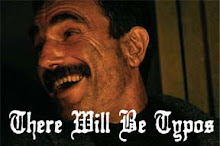
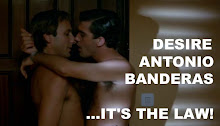
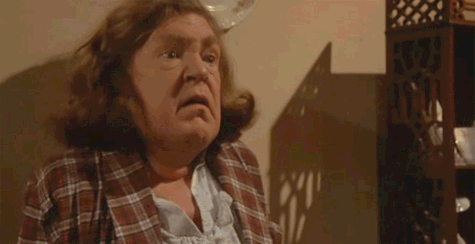
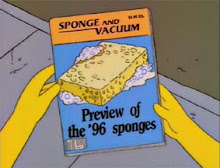
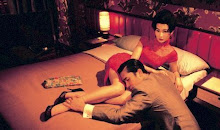
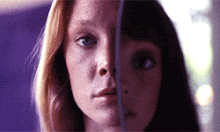


No comments:
Post a Comment